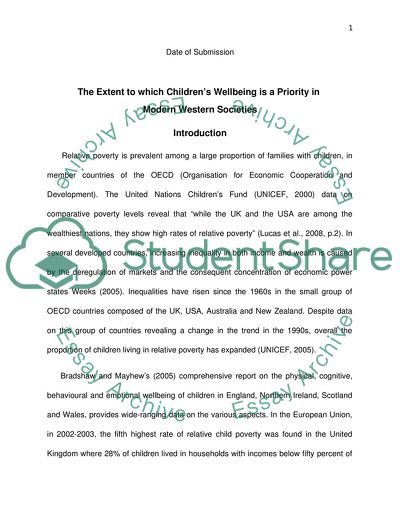Cite this document
(The Extent to which Childrens Wellbeing is a Priority in Modern Western Societies Literature review Example | Topics and Well Written Essays - 2250 words, n.d.)
The Extent to which Childrens Wellbeing is a Priority in Modern Western Societies Literature review Example | Topics and Well Written Essays - 2250 words. https://studentshare.org/education/1796780-to-what-extent-is-childrens-well-being-a-priority-in-modern-western-societies
The Extent to which Childrens Wellbeing is a Priority in Modern Western Societies Literature review Example | Topics and Well Written Essays - 2250 words. https://studentshare.org/education/1796780-to-what-extent-is-childrens-well-being-a-priority-in-modern-western-societies
(The Extent to Which Childrens Wellbeing Is a Priority in Modern Western Societies Literature Review Example | Topics and Well Written Essays - 2250 Words)
The Extent to Which Childrens Wellbeing Is a Priority in Modern Western Societies Literature Review Example | Topics and Well Written Essays - 2250 Words. https://studentshare.org/education/1796780-to-what-extent-is-childrens-well-being-a-priority-in-modern-western-societies.
The Extent to Which Childrens Wellbeing Is a Priority in Modern Western Societies Literature Review Example | Topics and Well Written Essays - 2250 Words. https://studentshare.org/education/1796780-to-what-extent-is-childrens-well-being-a-priority-in-modern-western-societies.
“The Extent to Which Childrens Wellbeing Is a Priority in Modern Western Societies Literature Review Example | Topics and Well Written Essays - 2250 Words”. https://studentshare.org/education/1796780-to-what-extent-is-childrens-well-being-a-priority-in-modern-western-societies.


